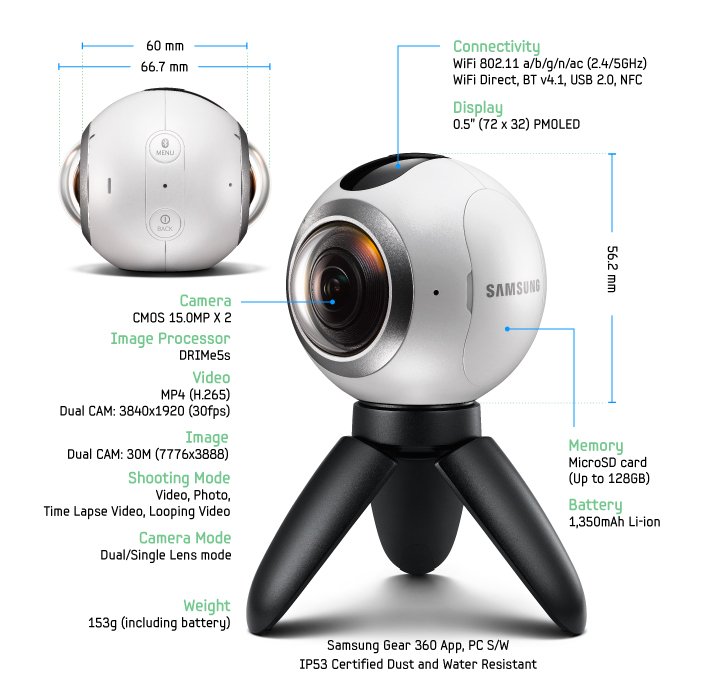
Samsung Gear 360
Yet another virtual reality (VR) device is coming onto the market, the Samsung Gear 360. Unlike its counterparts that are available, or soon to be available, on the market today, the Gear 360 is smaller, purportedly more immersive, and is being unreservedly marketed as a consumer product.
The whole point of the Gear 360 is to make VR accessible to casual users. And everything about the device, from its features to its price point, succeeds admirably in achieving this goal.

Features
For such a compact device, the Gear 360 nevertheless offers dual camera sensors, which create a combined 7776 x 3888 pixel frame. Each camera employs a 15 megapixel, complementary metal-oxide semiconductor (CMOS) sensor sporting a fish-eye lens.
The Gear 360 packs a 1350 milliampere-hour (mAh) lithium-ion battery, and the entire unit weighs a reasonable 153 grams, not including the tripod. Additionally, the device handles encoding that employs the latest H.265 Video Codec, for very efficient video processing.

Didn’t catch all that? Don’t worry. Let it suffice that the Gear 360 is a relatively (we hope!) inexpensive, 360-degree, mass-marketable, consumer-targeted virtual reality capture device that may be on the vanguard of the democratization and unprecedented mass distribution of virtual reality technology.
Not bad for a little plastic ball.
Downsides? The Gear 360 has a very disappointing capture rate. While the resolution is impressive, it only manges to capture up to 30 frames per second—not as smooth as one could hope, perhaps, but a step in the right direction. It’s also likely that the video, with its lower frame rate than the headset, means it will hardly be the most comfortable VR device in the market.
No final word on how much the device will cost; however, the Gear 360 is set for a Q2 (spring-summer) release this year, so you won’t have to wait very long.